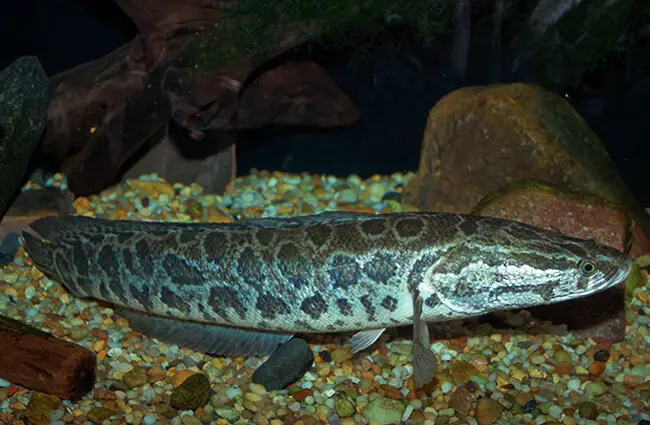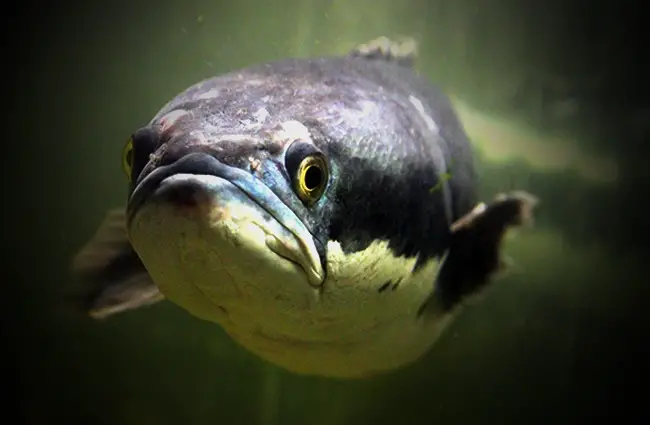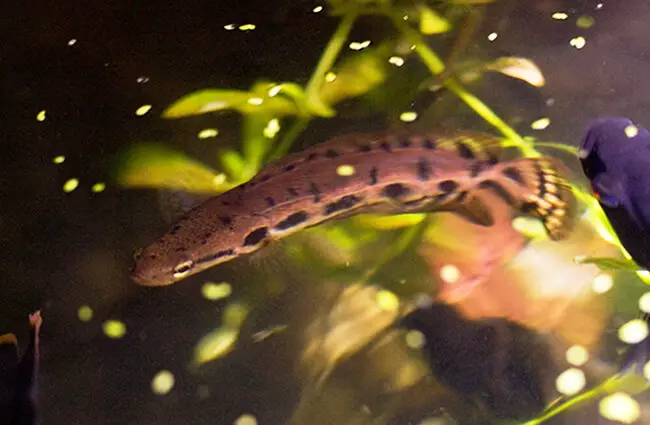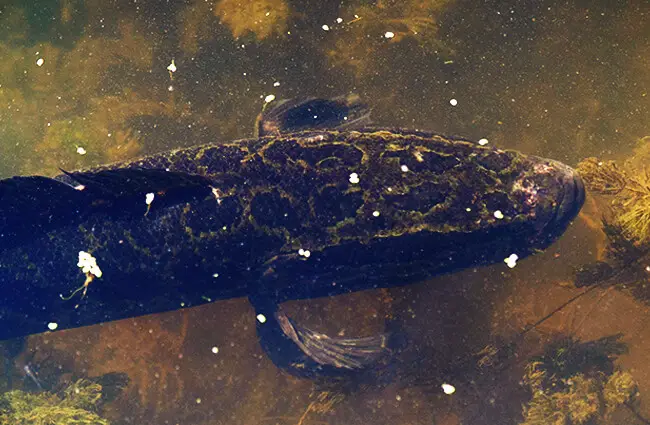Deep within the murky waters of Asia and Africa, a creature of remarkable resilience and predatory prowess lurks. Often misunderstood, sometimes revered, and frequently feared, the Snakehead fish is a true marvel of freshwater adaptation. With its elongated body, distinctive head resembling a snake, and an almost mythical ability to survive out of water, this fish has captivated the imagination of scientists, anglers, and nature enthusiasts alike. Join us on a journey to uncover the secrets of the Snakehead, from its ancient origins to its complex interactions with ecosystems and humanity.

Unveiling the Snakehead: A General Introduction
The term “Snakehead” refers to a family of freshwater fish, Channidae, comprising over 50 distinct species within two genera: Channa (native to Asia) and Parachanna (native to Africa). These fascinating fish are characterized by their elongated, cylindrical bodies, large mouths, and prominent dorsal and anal fins that run almost the entire length of their backs. Their most striking feature, however, is their flattened head, often covered in large scales, which indeed gives them a serpentine appearance. This unique morphology is not just for show; it hints at their predatory lifestyle and incredible adaptability.
Where Do Snakeheads Call Home?
Snakeheads are primarily found in the freshwater systems of tropical Africa and Asia. Their native range spans from the Middle East, across South and Southeast Asia, and into parts of East Asia. They thrive in a variety of habitats, preferring slow-moving or stagnant waters such as ponds, swamps, canals, and rivers with dense vegetation. These environments often have low oxygen levels, a challenge many fish cannot overcome, but one that the Snakehead is uniquely equipped to handle.
However, the story of the Snakehead’s habitat does not end with its native lands. Several species, most notably the Northern Snakehead (Channa argus), have been introduced to non-native regions, including parts of North America and Europe. These introductions, often due to accidental release from aquaculture or the pet trade, have led to significant ecological concerns, transforming the Snakehead into a notorious invasive species in many parts of the world.

The Apex Predator’s Plate: What Snakeheads Eat
Snakeheads are formidable ambush predators, and their diet reflects their position at the top of the food chain in their native habitats. As juveniles, they typically feed on zooplankton, insect larvae, and small crustaceans. As they grow, their diet shifts dramatically to include a wide array of larger prey. Adult Snakeheads are opportunistic carnivores, consuming:
- Other fish (including smaller Snakeheads)
- Frogs and other amphibians
- Small reptiles, such as lizards and snakes
- Crustaceans (crabs, shrimp)
- Insects
- Even small mammals like rodents and birds that venture too close to the water’s edge
Their powerful jaws, equipped with sharp, conical teeth, allow them to grasp and subdue their prey effectively. They are known for their explosive strikes, often lunging from cover to ambush unsuspecting victims.
A Family Affair: Mating and Reproduction
Snakeheads exhibit fascinating reproductive strategies, with many species displaying remarkable parental care. The breeding season typically occurs during warmer months, often coinciding with monsoon rains in their native ranges. Here is a general overview of their reproductive process:
- Courtship and Nest Building: Male and female Snakeheads engage in courtship rituals. Many species are monogamous during the breeding season. The pair will often clear an area of vegetation, sometimes creating a circular nest by biting off plants and forming a depression on the water’s surface or bottom.
- Spawning: The female lays thousands of buoyant, oil-rich eggs, which float to the surface. The male then fertilizes them. The number of eggs can vary significantly by species and size of the female, ranging from a few hundred to tens of thousands.
- Parental Care: This is where Snakeheads truly shine. Both parents, but often primarily the male, guard the eggs diligently. They fan the eggs to ensure oxygenation and protect them from predators. Once the eggs hatch, the fry remain in a dense school, often appearing as a reddish-orange cloud near the surface. The parents continue to guard these fry, sometimes for several weeks, leading them to foraging grounds and protecting them from any perceived threat. This intense parental care significantly increases the survival rate of their offspring.
- Multiple Spawns: Some species are capable of spawning multiple times within a single breeding season, further contributing to their reproductive success.

Beyond the Basics: Delving Deeper into Snakehead Biology and Ecology
Anatomy and Physiology: The Air-Breathing Advantage
One of the most extraordinary adaptations of the Snakehead is its ability to breathe atmospheric air. Unlike most fish that rely solely on gills, Snakeheads possess a suprabranchial organ, a primitive lung-like structure located above their gills. This organ allows them to directly gulp air from the surface, enabling them to survive in oxygen-depleted waters, a common feature of their preferred swampy habitats. This adaptation is crucial for their survival during droughts or when water bodies become stagnant.
This air-breathing capability also contributes to their infamous ability to “walk” on land. While not true walking, they can use their strong pectoral fins and body undulations to wriggle across short distances over damp ground from one water body to another. This terrestrial locomotion is typically employed to escape drying ponds or to seek new feeding grounds, showcasing their incredible resilience and dispersal potential.
A Glimpse into the Past: Snakehead’s Evolutionary History
The Channidae family has a long and intriguing evolutionary history, with fossil records indicating their presence dating back millions of years. Their origins are rooted in the ancient freshwater systems of Asia and Africa. Early forms likely evolved in environments characterized by fluctuating water levels and varying oxygen concentrations, driving the development of their unique air-breathing apparatus. The diversification of species within the Channa and Parachanna genera reflects a long period of adaptive radiation, allowing them to colonize diverse freshwater niches across their vast native range. Their ancient lineage underscores their success as a highly adapted and persistent group of fish.

Ecosystem Contributions and Interactions
In their native ecosystems, Snakeheads play a vital role as apex predators. They help regulate populations of smaller fish, amphibians, and invertebrates, contributing to the overall health and balance of their aquatic environments. Their presence can influence the structure of food webs and maintain biodiversity by preventing overpopulation of certain prey species. They are an integral part of the natural ecological tapestry of Asian and African freshwaters.
However, when introduced to non-native environments, their role shifts dramatically. As invasive species, Snakeheads can have devastating impacts:
- Competition: They compete with native predators for food and habitat.
- Predation: They prey heavily on native fish, amphibians, and invertebrates, often outcompeting or consuming species that have no natural defenses against them.
- Ecosystem Disruption: Their predatory pressure can lead to declines in native populations, potentially altering food webs and reducing biodiversity.
- Disease Transmission: They can introduce parasites and diseases to native fish populations.
Their adaptability, rapid growth, and strong parental care make them highly successful invaders, posing a significant threat to aquatic biodiversity in regions where they are not native.
Snakeheads and Humanity: A Complex Relationship
The interaction between Snakeheads and humans is multifaceted, ranging from culinary appreciation to intense conservation efforts.
- Food Source and Aquaculture: In many parts of Asia, Snakeheads are a highly prized food fish. Their firm, white flesh is considered a delicacy and is a staple in local cuisines. Species like the Giant Snakehead (Channa micropeltes) are extensively farmed in aquaculture, providing a significant source of protein and economic livelihood for many communities.
- Traditional Medicine: In some cultures, Snakehead fish are believed to possess medicinal properties, particularly for wound healing and post-operative recovery. Scientific research has begun to explore these traditional claims, investigating compounds found in the fish.
- Recreational Fishing: Anglers in both native and introduced ranges target Snakeheads for sport. Their aggressive strikes and powerful fights make them a challenging and exciting catch. In invasive regions, fishing for Snakeheads is often encouraged as a method of population control.
- Pet Trade: The unique appearance and intriguing behaviors of Snakeheads have made them popular in the aquarium trade. However, this has also been a primary pathway for their introduction into non-native waters when owners release unwanted pets.
- Invasive Species Management: In areas where Snakeheads are invasive, significant resources are dedicated to their control and eradication. This includes public awareness campaigns, fishing incentives, and various trapping and removal methods.

Practical Insights for Enthusiasts and Professionals
For the Aspiring Zoologist: Key Research Areas
Aspiring zoologists will find Snakeheads a rich subject for study. Here are some areas of particular interest:
- Physiological Adaptations: Research into the precise mechanisms of their air-breathing organ, osmoregulation in varying water conditions, and metabolic rates during terrestrial excursions.
- Behavioral Ecology: Detailed studies on parental care strategies across different species, territoriality, predatory behaviors, and social interactions.
- Genetics and Phylogenetics: Understanding the genetic diversity within species, evolutionary relationships between Channa and Parachanna, and genetic markers for identifying invasive populations.
- Invasive Species Biology: Investigating factors contributing to their success as invaders, modeling their spread, and developing effective control strategies.
- Aquaculture and Sustainable Practices: Research into optimizing farming techniques, disease prevention in captive environments, and the nutritional value of Snakehead products.
Finding Snakeheads in the Wild (and What to Do)
For animal lovers hoping to observe Snakeheads in their native habitat, look for slow-moving, vegetated freshwater bodies in Asia or Africa. They are often found lurking among submerged plants, under lily pads, or near fallen logs. Early morning or late evening are often the best times for observation when they are most active. Patience and keen observation skills are essential.
If you encounter a Snakehead in the wild in a non-native region (e.g., North America, Europe):
- Do NOT release it. This is crucial.
- Report it: Immediately contact your local wildlife agency, fisheries department, or environmental protection authority. Provide details of the location, date, and if possible, a photo.
- Contain it (if safe): If you are fishing and catch one, do not release it back into the water. Humanely dispatch it if regulations permit, or keep it in a secure container and contact authorities for instructions.
- Educate others: Help spread awareness about the dangers of invasive species and the importance of responsible pet ownership.

Caring for Snakeheads in Captivity: A Zookeeper’s Guide
Caring for Snakeheads in a zoo or aquarium setting requires specialized knowledge due to their predatory nature and unique physiological needs. Here are key considerations:
- Enclosure:
- Size: Provide a spacious tank, significantly larger than what might seem necessary for their current size, as they grow quickly and can reach impressive lengths. A good rule of thumb is at least 100 gallons for a single medium-sized species, much more for larger species like the Giant Snakehead.
- Water Parameters: Maintain stable water quality. While tolerant of low oxygen, clean, well-filtered water is essential for long-term health. Specific parameters (pH, temperature) vary by species, but generally, tropical species prefer warmer water (75-82°F or 24-28°C).
- Substrate and Decor: A soft substrate (sand or fine gravel) is preferred. Provide ample hiding spots using driftwood, rocks, and dense artificial or live plants. Ensure decor is secure and cannot be dislodged by a powerful fish.
- Lid: A very secure, heavy lid is absolutely critical. Snakeheads are expert escape artists and can push open surprisingly heavy lids or jump through small openings.
- Diet:
- Variety is Key: Offer a diverse diet of high-quality, appropriately sized live or frozen foods. This can include feeder fish (ensure they are disease-free), earthworms, crickets, shrimp, mussels, and specialized carnivorous pellets.
- Avoid Overfeeding: Feed several times a week rather than daily, adjusting quantity based on the fish’s size and activity level.
- Nutritional Balance: Supplementing with vitamins can be beneficial, especially if the diet is not perfectly varied.
- Social Needs:
- Solitary or Species-Specific: Many Snakehead species are highly territorial and aggressive, especially towards conspecifics. Housing them individually is often the safest approach. Some species can be kept in pairs or groups, but this requires a very large tank and careful monitoring for aggression.
- Tank Mates: Generally, it is best to avoid tank mates unless they are significantly larger and robust enough to withstand potential aggression, or too small to be considered prey. Research specific species compatibility thoroughly.
- Health Monitoring:
- Observation: Regularly observe for signs of stress, disease, or injury, such as clamped fins, lethargy, loss of appetite, or unusual spots.
- Water Testing: Routine testing of water parameters (ammonia, nitrite, nitrate, pH) is vital for preventative care.
- What to Avoid:
- Releasing into the Wild: Never release a captive Snakehead into any natural waterway.
- Inadequate Enclosure Security: Underestimating their escape abilities can lead to tragic outcomes for the fish and potential ecological harm.
- Monotonous Diet: A lack of dietary variety can lead to nutritional deficiencies.
- Overcrowding: This will inevitably lead to stress, aggression, and poor health.
Fascinating Facts About Snakeheads
- “Walking Fish”: Their ability to wriggle across land for short distances has earned them this nickname.
- Devoted Parents: Many species exhibit exceptional parental care, guarding their eggs and fry fiercely.
- Long Lifespan: Some larger species can live for over 10 years in the wild and even longer in captivity.
- Size Variety: Snakeheads range from small species just a few inches long to giants exceeding three feet (one meter) in length.
- Ambush Predators: They are masters of camouflage and patience, waiting for prey to come within striking distance.
- Resilient Survivors: Their air-breathing organ allows them to survive in harsh, low-oxygen conditions that would kill most other fish.
- Culinary Delicacy: Highly prized as food fish in many Asian cultures.
- Invasive Threat: Their adaptability and predatory nature make them a significant invasive species concern outside their native range.
- Coloration: Many species display beautiful and intricate patterns and colors, making them attractive to aquarists.
Conclusion: A Legacy of Adaptation
The Snakehead fish, in all its diverse forms, stands as a testament to the power of adaptation and natural selection. From its ancient origins to its modern-day challenges as both a culinary staple and an ecological threat, this remarkable fish continues to intrigue and challenge us. Understanding the Snakehead’s biology, behavior, and ecological role is not just an academic exercise; it is crucial for managing its populations, protecting native biodiversity, and fostering a more harmonious coexistence with the natural world. Whether viewed as a formidable predator, a devoted parent, or a delicious meal, the Snakehead undeniably holds a significant place in the tapestry of life on Earth.

![Red Angus Closeup of a beautiful Red Angus cowPhoto by: U.S. Department of Agriculture [pubic domain]https://creativecommons.org/licenses/by/2.0/](https://animals.net/wp-content/uploads/2020/03/Red-Angus-4-238x178.jpg)




![Red Angus Closeup of a beautiful Red Angus cowPhoto by: U.S. Department of Agriculture [pubic domain]https://creativecommons.org/licenses/by/2.0/](https://animals.net/wp-content/uploads/2020/03/Red-Angus-4-100x75.jpg)

